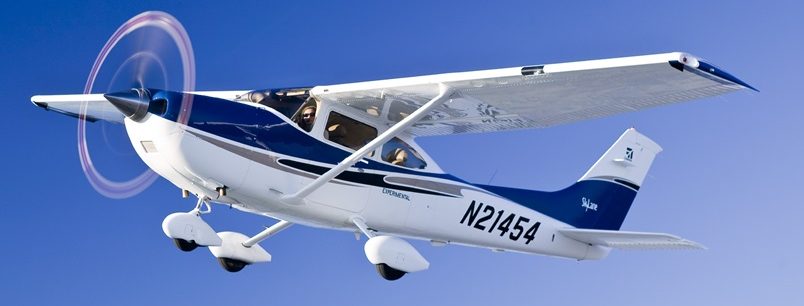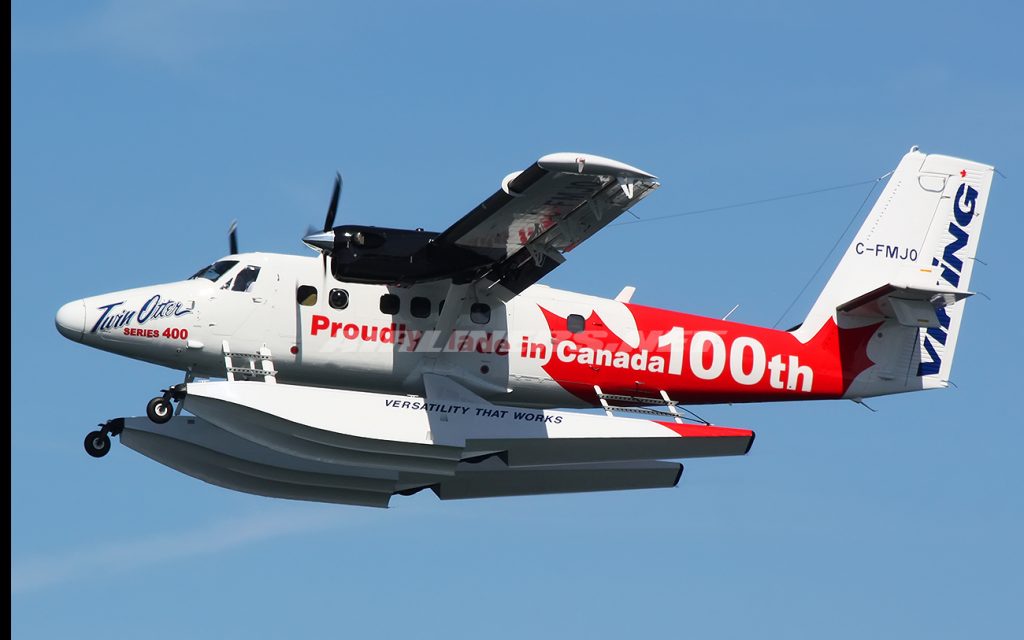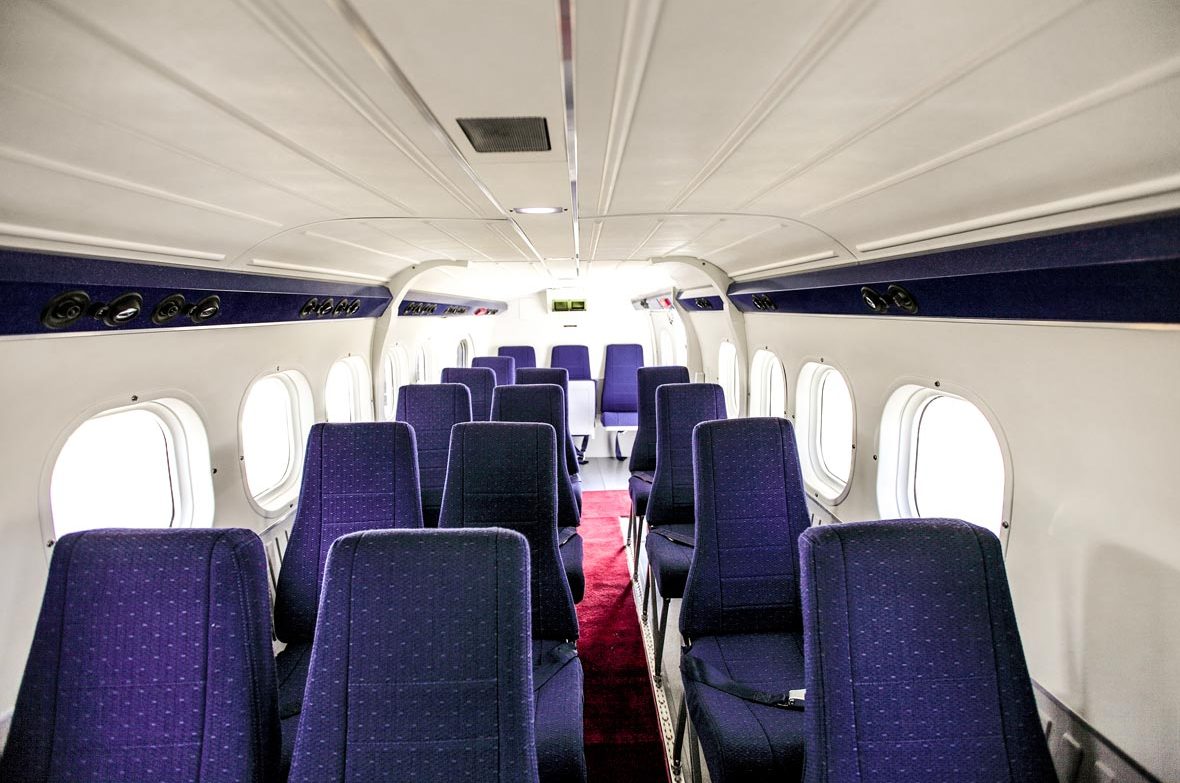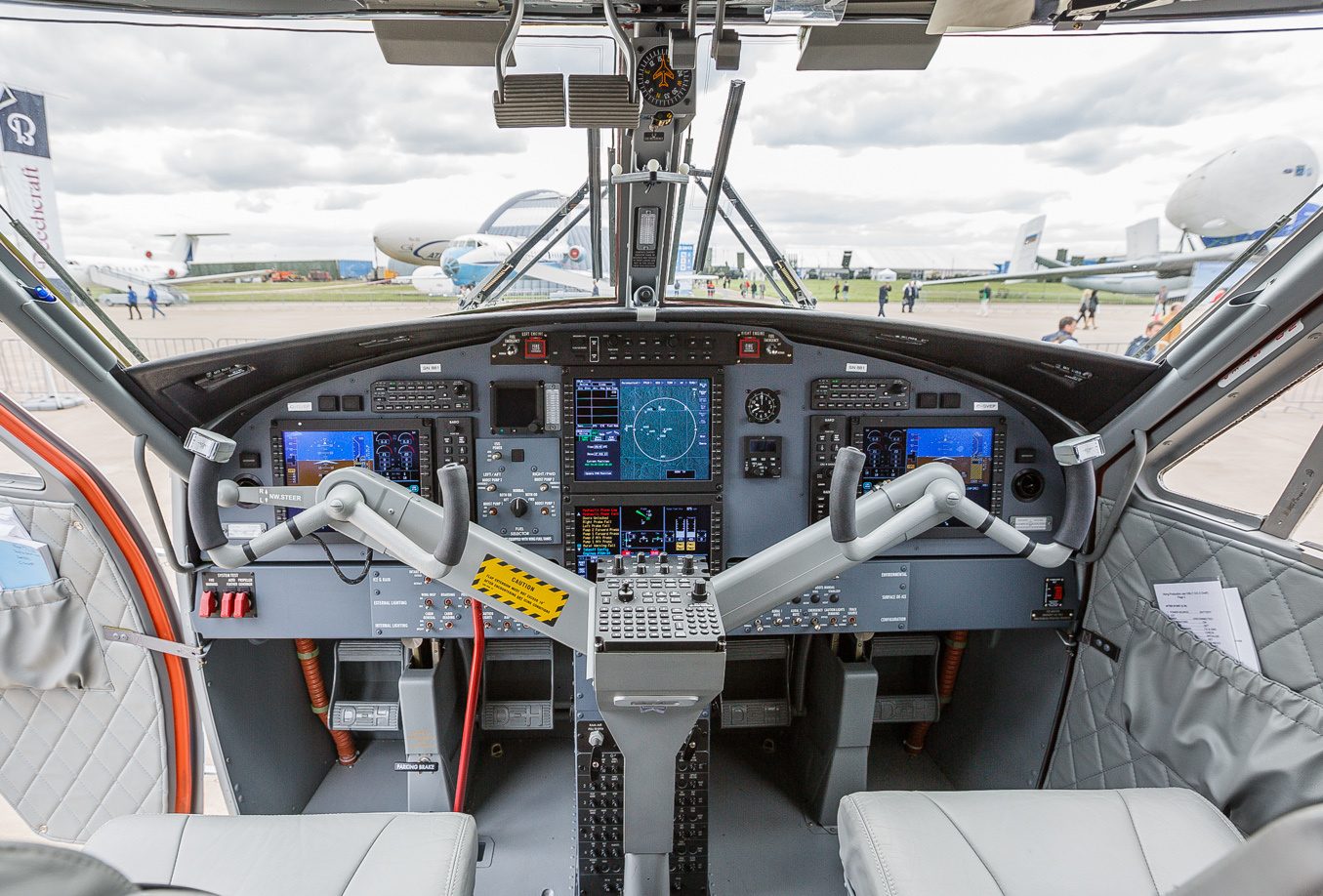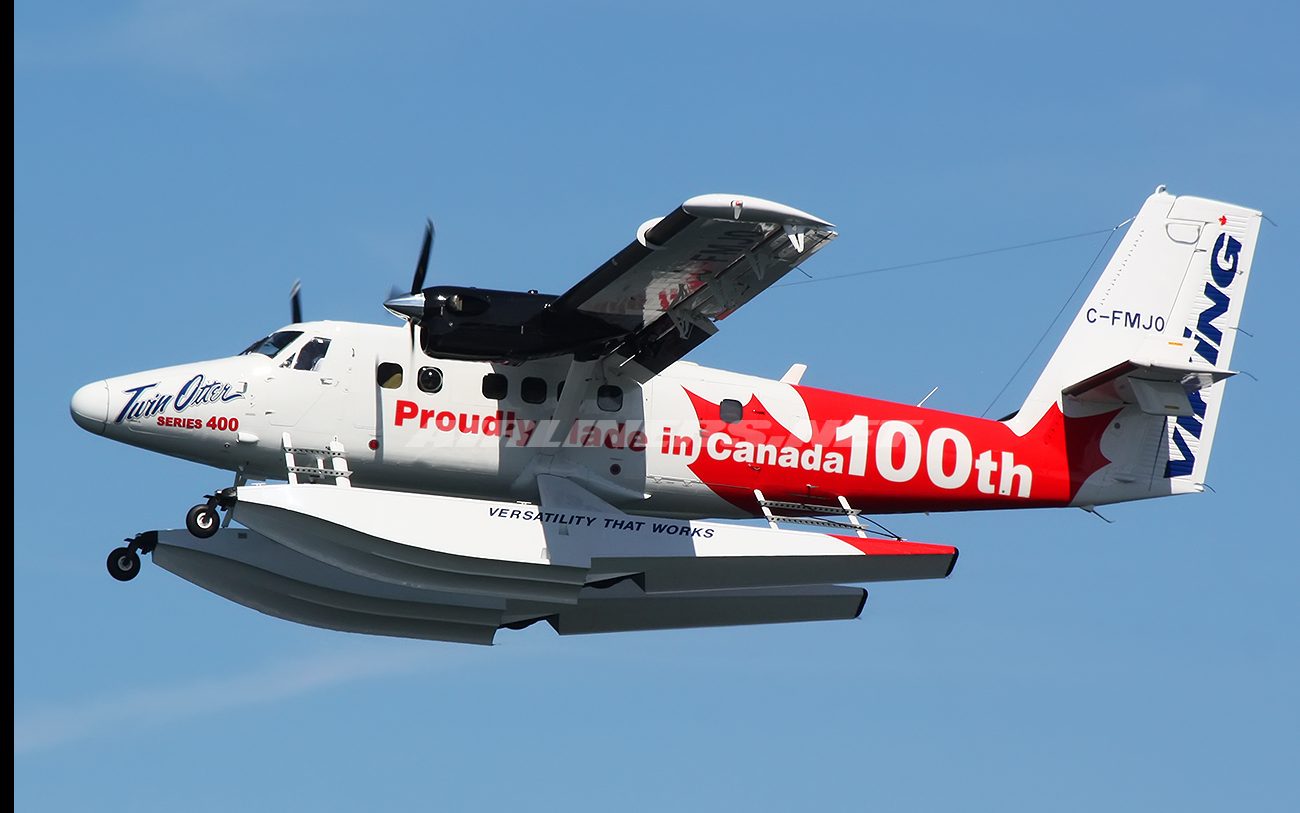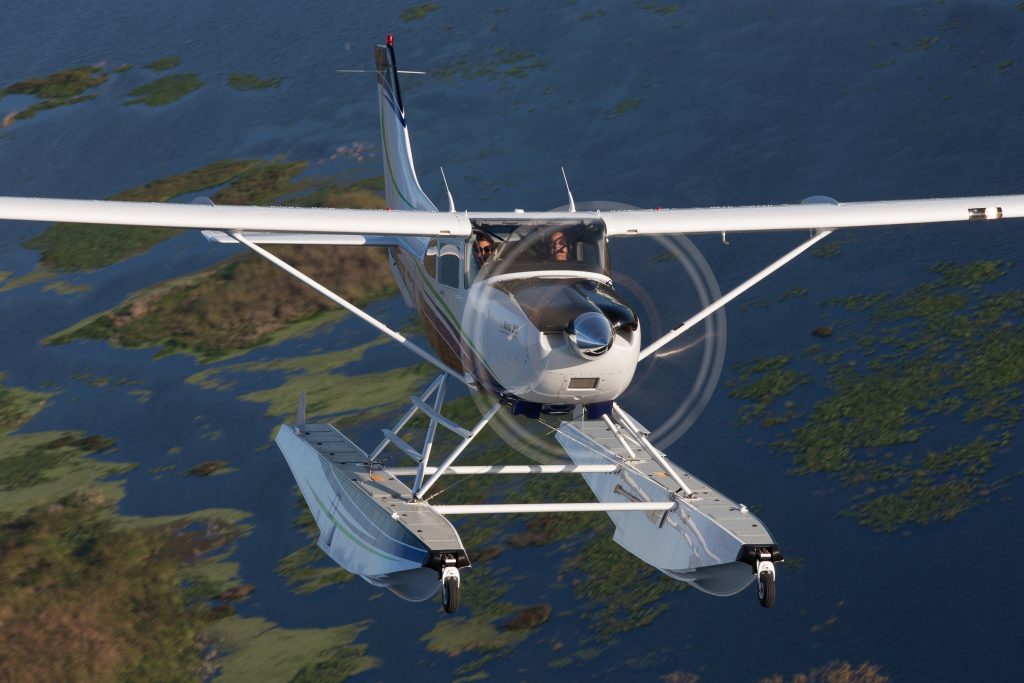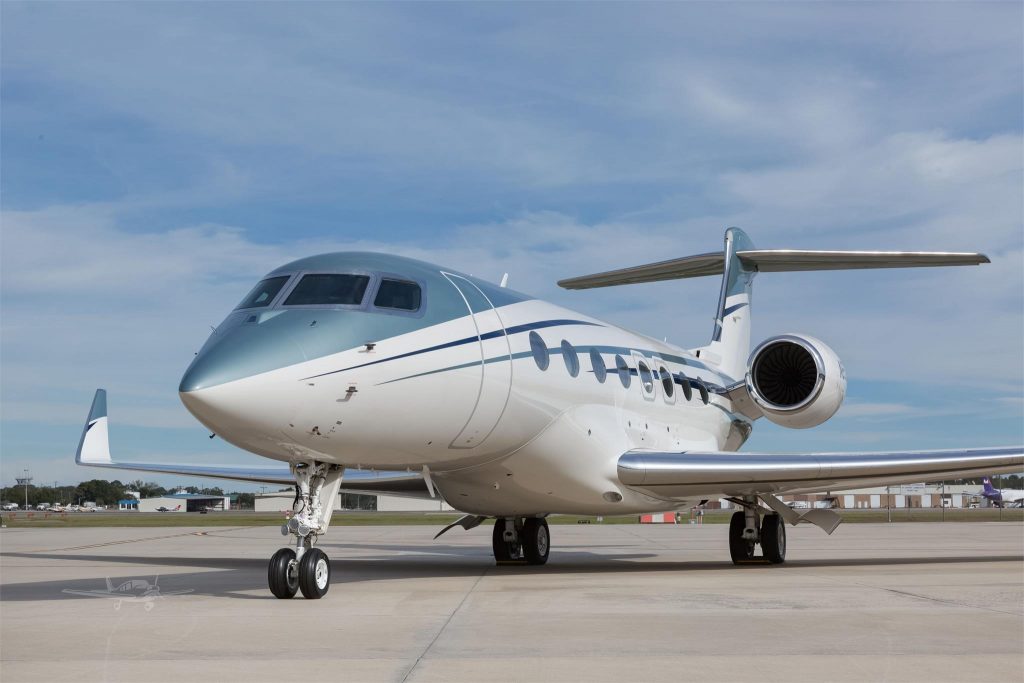Viking Air Twin Otter: Exceptional Performance in Extreme Conditions
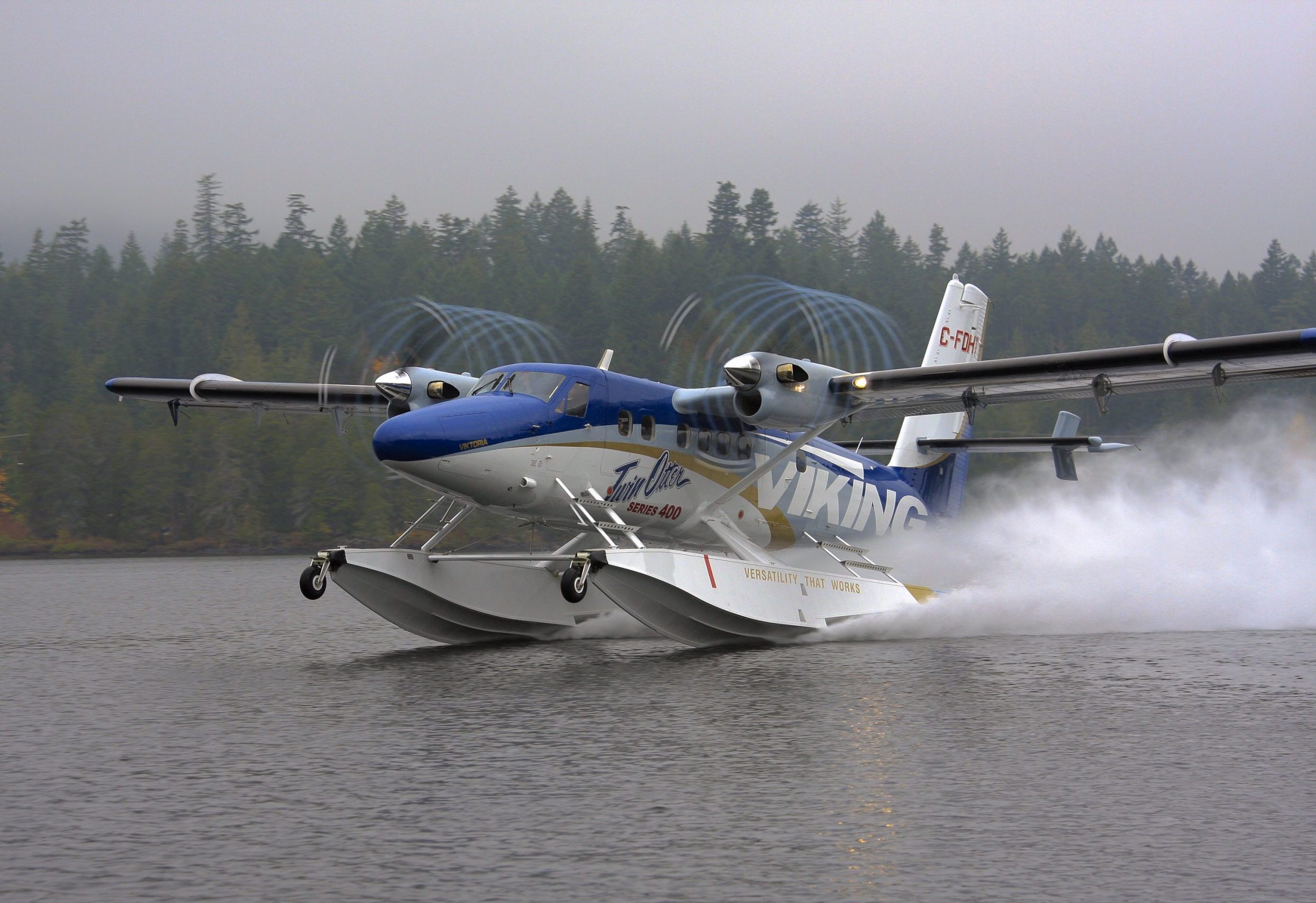
Prepare to embark on a thrilling journey through the extraordinary world of the Viking Air Twin Otter. Renowned for its Short Takeoff and Landing (STOL) capabilities, this versatile aircraft has showcased its prowess across a diversity of challenging conditions worldwide. From executing daring remotes rescues in the icy wilderness of the polar regions to weaving through the balmy archipelago of island-hopping adventures, the prowess of the Twin Otter is mind-blowing. As we delve deeper into these high-altitude operations, humanitarian missions, wildlife conservation efforts, and other record-breaking feats, we promise to take you on a riveting expedition that will redefine what you thought an aircraft could achieve.
Arctic Exploration and Research
The Viking Air Twin Otter’s adaptability in harsh weather conditions has been extensively tested and validated, particularly in explorations set amid the unforgiving Arctic landscape. Let’s delve into the three primary ways this STOL marvel assists with Arctic research and expeditions:
South Pole Winter Evacuations
The Viking Air Twin Otter is the hero of many inspiring South Pole winter evacuation stories wherein the aircraft saved countless lives marooned in the icy wilderness. Its STOL capabilities and robust design allow it to operate on snow and ice, making it the go-to aircraft for extracting researchers, explorers, and scientists stranded in hostile Arctic environments. For instance, in July 2016, this awe-inspiring aircraft successfully rescued two sick workers from the Amundsen-Scott South Pole Station, marking an unprecedented winter medical evacuation.
Arctic Wildlife Surveys
Leveraging its low noise levels and exceptional visibility, the Twin Otter supports numerous Arctic wildlife surveys. It is instrumental in tracking wildlife migration patterns, studying animal behaviour, and monitoring population changes, thereby enabling the conservation of endangered Arctic species. The boxy, high-wing design of the aircraft allows for a wide field of vision, making it an ideal ‘eye in the sky’ to observe and document Arctic flora and fauna.
Supporting Scientific Expeditions in Extreme Cold
Finally, the Viking Air Twin Otter’s prowess isn’t restricted to rescue missions or wildlife tracking—it’s also a vital tool in scientific research. The aircraft’s versatility and resilience to extreme cold make it the ideal means of transport among remote scientific outposts and research stations in the Arctic. From delivering vital supplies to transporting research teams across colossal glaciers and icy fjords, the Twin Otter enables critical scientific endeavours to proceed, regardless of harsh weather conditions.
Tropical Island-Hopping Adventures
When one thinks about the Viking Air Twin Otter, expanses of icy landscapes and grainy snowy terrains might instantly come to mind. However, this hardy aircraft sees plenty of UV rays too. Its ability to land on water sets it apart for tropical island-hopping missions, making the sun-kissed Maldives, the Caribbean’s vibrant life, and the remote Pacific communities accessible.
Trans Maldivian Airways’ Extensive Operations
Trans Maldivian Airways, operating in the paradise archipelago of the Maldives, holds the title of the largest seaplane operator in the world. Its fleet? You guessed it – primarily consisting of the Viking Air Twin Otter. These planes serve as lifelines for the country’s 200+ inhabited islands, connecting small atolls with the country’s international airport and luxury resorts. Transfers of personnel, tourists, and critical medical cases have been made efficient, accessible, and, let’s not forget, highly scenic, thanks to the Twin Otter’s seamless seaplane operation.
Caribbean Island Connections
The Viking Air Twin Otter also plays an essential role in the heart of the Caribbean, connecting numerous islands. It serves as the preferred island-hopping mode of transport between the volcanic islands of Saint Vincent and the Grenadines. The aircraft’s ability to take off and land in short distances allows it to smoothly operate between small airstrips and seaports in the region. So, whether it’s providing essential services to remote communities or offering tourists a bird’s-eye view of the Caribbean’s azure blue waters, the Twin Otter is a constant presence in these sunny skies.
Supporting Remote Pacific Communities
Moving to the Pacific, the Viking Air Twin Otter extends its footprint to the isolated communities on remote islands. Its STOL capabilities make it possible for air operators like Vanuatu’s Air Melanesi to bring in essential supplies and perform medical evacuations. It doesn’t stop at that; it also brings the world closer to locals by connecting them with larger cities, thus playing a key role in local economic development. The Twin Otter, thus, through its versatility, reinforces its role as a support system for these distant communities nestled in oceanic expanse.
As the saying goes, “No runway too short, no mission too hard”; the Viking Air Twin Otter belongs to every corner of the world, acting as the wings to those in need, from the frigid Arctic to sunny islands.
High-Altitude Missions
The Viking Air Twin Otter is renowned for its performance in high-altitude missions. Blessed with the ability to operate in thin air conditions, this versatile aircraft has achieved incredible feats, especially in the Himalayan mountain range. With its STOL capabilities and robust adaptability, it has become a go-to aircraft for critical missions under extreme conditions.
Himalayan Mountain Rescues
Mountain rescues in the Himalayas represent some of the most demanding high-altitude operations due to the challenging terrains and thin air. The Viking Air Twin Otter shines in this high-altitude environment with its high climb rate, rugged build, and incredible flexibility. Equipped with specialized modifications to enhance its performance, this aircraft can operate effectively even in the highest peaks of the Himalayas, making it an essential asset for mountain rescue missions.
Several successful rescue missions have been accomplished using the Twin Otter, saving countless climbers who found themselves in danger during their daunting ascents. The Twin Otter’s unique mixture of durability, versatility, and STOL capabilities makes it suitable for terrain where few other aircraft dare to venture.
Operating in Thin Air Conditions
The ©VIKING Air Twin Otter’s capability of operating in thin air is one of its most significant assets. At higher altitudes, air density decreases, significantly impacting an aircraft’s performance. Despite these challenges, the Twin Otter’s powerful engines and aerodynamically efficient design allow it to maintain stability and control even in such challenging conditions.
The integral capacity to adjust the power settings and manipulate the flight controls efficiently allows pilots to optimize the aircraft’s capabilities, thereby overcoming reduced engine performance and decreased lift encountered in thin air conditions. This characteristic has transformed the Twin Otter into a reliable asset in extreme high-altitude operations around the globe.
Supporting High-Altitude Research Stations
Scientific research in high-altitude locations, like Antarctica’s Plateau Station, poses significant challenges, especially for the logistics and support systems. The Viking Air Twin Otter plays a critical role in these missions – supporting logistics, transporting personnel, and delivering supplies to these inaccessible locations.
With the capability to withstand extreme cold conditions, take off and land on short, unprepared surfaces, and excellent cargo capacity, the Twin Otter proves to be an ideal choice for supporting these research stations. Its dual roles as a freight and passenger plane allow it to fulfil multiple applications during each mission, increasing its efficiency and value in such high-altitude operations.
In conclusion, the Viking Air Twin Otter’s versatility and robust performance in high-altitude operations have made it an incomparable asset in the aviation industry. Its proven ability to operate in thin air conditions and its critical role in Himalayan mountain rescues and supporting high-altitude research stations are stellar testament to this aircraft’s limitless capabilities.
Humanitarian Aid and Disaster Relief
In our global society, unforeseen disasters can strike in any location at any time. The Viking Air Twin Otter has a well-earned reputation for not only standing up to extreme conditions, but for being an essential part of rescue missions. Here, we delve into how it makes significant contributions towards humanitarian aid.
Medical Evacuations in Remote Areas
The Twin Otter has long been recognised for its Short Take-Off and Landing (STOL) capabilities, which are invaluable in emergency situations when minutes count. This versatile aircraft can land in small, remote landing strips, often unreachable by other vehicles. From high-alpine rescues on Mount Everest to isolated incidents in the dense Amazon rainforest, the Twin Otter has repeatedly proven itself an indispensable asset. Operating efficiently under dire circumstances, it performs medical evacuations in remote areas, bringing people to safety and ensuring they receive the vital care they need.
Delivering Supplies to Disaster-Stricken Regions
Natural disasters like earthquakes, typhoons, or floods often leave locals stranded, without access to essential supplies. The Viking Air Twin Otter steps up to the plate in these situations, working tirelessly to supply disaster-stricken regions with food, water, and medical supplies. Its exceptional payload capacity allows it to carry significant amounts of relief aid. Even in extremely challenging terrains or conditions, the Viking Air Twin Otter ensures much-needed supplies reach the most desperate areas, truly embodying the spirit of humanitarian aid.
Supporting Relief Efforts in Challenging Terrains
Operating in extreme conditions is the Viking Air Twin Otter’s forte. Its robust construction and powerful twin-turboprop engines combine to create a hardy, reliable aircraft capable of providing essential assistance in the most challenging terrains. Whether it’s delivering equipment and supplies to relief workers or providing transportation for personnel, the Twin Otter aids in relief efforts with unmatched versatility. This makes the Twin Otter a lifeline in many parts of the world where the terrain is rough, and access is limited.
By defying limitations and capitalising on its laudable flight capabilities, the Vinking Air Twin Otter has constantly demonstrated how an aircraft, when used creatively and pushed to its boundaries, can make significant contributions to humanitarian aid and disaster relief. It’s no wonder that, even after many years in operation, the Twin Otter remains a valuable asset in the global mission to protect and aid those in need.
Wildlife Conservation Efforts
One of the key areas where the Viking Air Twin Otter has made an indelible impact is in wildlife conservation efforts. Versatile, reliable, and with excellent STOL capabilities, the Twin Otter has proven itself to be a valuable player in efforts to conserve biodiversity and protect animal species worldwide.
Aerial Surveys of Endangered Species
The Viking Air Twin Otter has been instrumental in performing aerial surveys of endangered species in multiple habitats across the globe. The Twin Otter, fitted with high-resolution cameras and other scientific equipment, is perfectly adept at capturing valuable data for population studies. Its STOL capabilities also allow the aircraft to land in remote locations, increasing the spectrum and reach of these studies tremendously. This has enabled scientists to gain better insights into the habits, population size, and threats that many at-risk species face, contributing vitally to their preservation.
Anti-Poaching Patrols
Also, the Viking Air Twin Otter’s ability to handle extreme conditions and challenging terrains has made it a formidable asset in anti-poaching patrols. Flying low and slow over vast national parks, game reserves, and remote wilderness areas, the Twin Otter provides rangers and conservation agencies a stable, maneuverable platform for detecting and tracking illegal poaching activities. With its robust capacity and endurance, the Twin Otter can cover large swaths of land effectively helping to curtail the menace of poaching and promote wildlife conservation.
Tracking Marine Mammals
Lastly, the Viking Air Twin Otter’s amphibious configuration has been incredibly effective in tracking marine mammals, including whales, dolphins, seals, and others. The aircraft’s ability to perform takeoffs and landings on water allows close access to marine habitats right in their vast oceanic homes. Armed with tracking devices, imaging equipment, and skilled observation crews, these Twin Otters contribute substantial data for marine biologists and conservations alike. Thus, facilitating improved understanding of migratory patterns, breeding habits, and threats to these majestic ocean dwellers.
The remarkable versatility of the Viking Air Twin Otter truly shines in these wildlife conservation efforts. From aerial surveys of endangered species to anti-poaching patrols to tracking marine mammals, the roles this Swiss Army Knife of the skies can handle are as diverse as the species it helps protect. Here’s to the continued contribution of this remarkable aircraft in safeguarding our planet’s precious wildlife.
Search and Rescue Operations
In the realm of search and rescue missions, the Viking Air Twin Otter proves to be a truly indispensable asset, demonstrating an unmatched ability to overcome formidable environments and challenging circumstances. Let’s delve into some of the most notable examples of these missions.
Maritime Search Missions
As a versatile aircraft, the Viking Air Twin Otter has been integral to various maritime search missions worldwide. Its STOL (Short Takeoff and Landing) capabilities and ability to operate in extreme conditions make it an ideal choice for rescue operations over vast bodies of water. A prime example of this is its use in the North Atlantic where it provides search and rescue services for vessels in distress. The aircraft can fly for extended periods searching for lost or stranded seafarers, demonstrating its endurance and adaptability in challenging maritime conditions.
Mountain Rescue Support
The Viking Air Twin Otter also excels in high-altitude operations, making it a key player in mountain rescues. This versatile aircraft is renowned for its ability to efficiently carry out rescue missions in the treacherous terrains of the Himalayas. Thanks to its robust construction and unrivalled STOL capabilities, it can land at high altitude helipads, often located at precipitous cliff edges or tiny mountain ridges, providing emergency airlift services for mountaineers in distress. It has demonstrated its high-altitude prowess in numerous Everest expeditions, consistently saving lives in one of the world’s harshest environments.
Locating Missing Hikers in Dense Forests
Additionally, the Viking Air Twin Otter’s formidable aerial survey abilities have made it a trusted ally in finding missing hikers in sprawling, dense forests. The aircraft’s low-and-slow flying capabilities enable precise scanning of vast terrains, making it easier to locate lost individuals. Equipped with state-of-the-art surveillance tech, the Twin Otter can stream live video to ground operators, drastically improving rescue mission success rates.
Through these extensive and varied operations, it becomes abundantly clear that the Viking Air Twin Otter muster more than just transport capabilities – it delivers hope and safety in the world’s most enticing yet unforgiving locales. In the constant struggle against Mother Nature’s extremes, the Twin Otter continuously proves that it’s more than just a plane; it’s a lifeline, an invaluable tool for safeguarding human life.
Extreme Weather Flying
Extreme weather presents some of the most daunting challenges for any aircraft, and the Viking Air Twin Otter is no exception. Yet, this versatile aircraft has managed to surpass expectations in this area, operating successfully in myriad adverse weather conditions globally.
Hurricane Hunter Missions
The Twin Otter has been integral to hurricane hunter missions, where daring crews fly directly into the most violent tropical cyclones to gather critical data. This intelligence aids in predicting storm paths and intensities, potentially saving lives and property. The Twin Otter’s robust construction, powerful engines and Short Takeoff and Landing (STOL) capabilities make it uniquely suited to withstand these punishing winds and heavy precipitation.
Operating in Sandstorms and Dust Clouds
In addition to hurricane missions, the Viking Air Twin Otter has masterfully navigated through treacherous sandstorms and dust clouds. These natural phenomena present a dual threat: reduced visibility and potential engine damage due to the high concentration of airborne particles. The ability of the Twin Otter to operate under these conditions is testament to its durable engine filters and advanced navigation systems, which allow it to safely land even in near zero-visibility conditions.
Ice Runway Landings
Perhaps one of the most awe-inspiring feats of the Twin Otter is its ability to land on ice runways. In remote polar research stations, traditional runways are a rarity. Instead, planes must land on ice or snow-covered strips. Cumbersome ski-equipped landing gear allows the plane to handle the slick surface, while its STOL capabilities are crucial for negotiating the short and often uneven ice runways.
These accomplishments underline the sky’s not the limit for the Twin Otter, as this highly adaptable aircraft continuously refines what is possible in the face of challenging environments.
Note: Flying in extreme weather conditions is an unavoidable necessity for certain missions. This is not advisable and should only be done by highly skilled pilots on specially equipped aircraft like the Twin Otter, and only when absolutely necessary.
Record-Breaking Flights
The Viking Air Twin Otter has a rich tapestry of achievements to its name. Yet, some of them stand out not just for defying the limitations of the aeroplane but for rewriting the annals of aviation history.
Longest Twin Otter Flight
One such exemplary feat is the longest Twin Otter flight, where the aircraft’s endurance was pushed to its absolute limits. This flight broke records and established the Twin Otter as a reliable, long-distance, high- endurance aircraft.
In an epic journey spanning across continents and time zones, the aircraft demonstrated its efficient design, remarkable fuel economy, and robust capabilities. This landmark achievement showcased how the Viking Air Twin Otter could adapt to various flight situations and held immense implications for researchers, explorers and globally dispersed organisations in remote areas.
Highest Altitude Reached
The Twin Otter also proved its exceptional performance capabilities by reaching the highest altitude recorded for this type of aircraft. Through the biting cold and thin air of stratospheric heights, the Twin Otter ascended gallantly – an achievement that still lights the path for future high-altitude flights. This astonishing feat underscored the aircraft’s prowess at operating in low-oxygen, high-altitude environments, essential for disaster relief, and search and rescue operations.
This significant milestone cements the Viking Air Twin Otter’s status as a truly sturdy and versatile aircraft stretching the boundaries of conventional aviation.
Most Challenging Landing Locations
The Viking Air Twin Otter is also known for its STOL capabilities making it the go-to aircraft for operations in adverse terrain and extreme geographical locations. From ice runways in the polar regions to the dizzying heights of the world’s most challenging airstrips, the aircraft has successfully accomplished landing and takings-off under some of the most prohibitive circumstances.
Among them includes the Twin Otter’s operation on Antarctica’s blue-ice runways and its successful landing at one of world’s highest and treacherous airstrips, demonstrating its unparalleled capabilities in tackling the most testing of terrains.
The Viking Air Twin Otter continues to set the bar high for aircraft operations worldwide, mastering the impossible and continually pushing beyond perceived boundaries. The aircraft’s capability to break previous records is a testimony to its exceptional design and engineering – recognised and acclaimed globally.
Military and Special Operations
One aspect of the Viking Air Twin Otter’s versatility is its extensive use in military and special operations around the globe. Known for its STOL abilities, ruggedness, and reliability, the Twin Otter has become a mainstay in some of the world’s toughest environments.
Covert Missions in Hostile Territories
One of the distinguishing features of the Viking Air Twin Otter is its ability to operate covert missions in hostile territories, making it a preferred choice among military forces. Low operational noise levels coupled with its ability to land on unprepared surfaces has offered unique advantages in covert missions. The Twin Otter has been utilised in a variety of missions, from the delivery of essential supplies to extraction operations in remote regions. Its adaptability ensures it can survive and thrive where other aircraft dare not venture.
Paratrooper Drops
The Twin Otter’s spacious cabin design and high-wing configuration make it an ideal platform for paratrooper drops. These STOL aircraft are designed to fly at slow speeds, providing a safe and stable environment for paratroopers to exit the aircraft. Not to mention, the Twin Otter’s ability to operate from short and unimproved runways enables it to serve as a perfect aircraft for airborne assaults and rapid-deployment situations.
Intelligence, Surveillance, and Reconnaissance (ISR) Operations
In the age of information warfare, the Viking Air Twin Otter plays an essential role in Intelligence, Surveillance, and Reconnaissance (ISR) operations. Its ability to stay aloft for extended periods, coupled with ample space for sophisticated surveillance equipment, make it a robust and versatile platform for ISR missions. Its customizable interiors allow various configurations to meet specific mission requirements, from high-resolution cameras for detailed aerial surveys to advanced radar systems for comprehensive intelligence gathering. The Twin Otter’s flexibility to conduct ISR operations significantly contributes to maintaining a superior strategic advantage in challenging environments.
There’s no doubt that the Viking Air Twin Otter continues to redefine the perimeters of what’s possible in Military and Special Operations across the globe. With its impressive track record and future innovations on the horizon, it seems that the Twin Otter is only just beginning to reveal its ultimate potential.
Aerial Photography and Filmmaking
The Viking Air Twin Otter a versatile aircraft, doesn’t just conquer extreme conditions, tackle impossible missions, and engage in record-breaking flights for practical purposes alone. It has proven its mettle as a valuable ally in the realm of aerial photography and filmmaking as well.
Capturing Breathtaking Landscapes
The Viking Air Twin Otter is an aircraft of choice for many aerial photographers and cinematographers due to its attributes. With the capacity to take off and land from short and unprepared runways, it can reach places where usual aircraft can’t. From the pure white dunes of the Antarctic to the lush green jungles of the Amazon rainforest, the Viking Air Twin Otter helps lensmen capture the beauty of our planet from the best angles, often in environmental conditions that are generally considered challenging.
Supporting Nature Documentaries
In the domain of wildlife and nature filmmaking, the Viking Air Twin Otter holds a special place. Filming wildlife often requires reaching remote and inaccessible regions of the world. With its STOL capabilities and adaptability to extreme conditions, the Twin Otter has become a go-to aircraft for many nature documentary crews, helping them capture awe-inspiring footage of nature and wildlife in their organic habitats – all from an aerial perspective.
Aerial Surveys for Mapping and Geology
In the field of mapping and geology, speed and accuracy are paramount. Using the Viking Air Twin Otter, several scientific expeditions have been able to conduct detailed aerial surveys for mapping and geology studies. Its adaptability allows it to conduct low-speed surveys in diverse terrains, yielding precise results in less time. For the geologists who are studying the Earth’s hidden treasures or the planners and surveyors who are mapping out our cities, the Twin Otter is a preferred resource.
Whether it’s capturing the pristine beauty of an untouched piece of land, delivering unmatched aerial footage for nature documentaries, or assisting in detailed mapping and geology studies, the Viking Air Twin Otter continues to leverage its vast capabilities beyond the usual realms of aviation.
Unique Modifications and Variants
The multifaceted ability of the Viking Air Twin Otter can be highly attributed to the unique modifications and variants it has embraced over the years, allowing it to adapt to diverse requirements and environments.
Skydiving Operations
The Viking Air Twin Otter has become a preferred platform for skydiving operations around the globe, thanks to its exceptional climb rate and sturdy construction. It can rapidly reach altitudes of 13,000 feet, the favoured drop point for skydivers, thanks to its robust engines and light airframe. Furthermore, the Twin Otter is ideal for skydiving because of its spacious cabin, capable of accommodating up to 22 jumpers, and the option to select larger doors for safer exits.
On the operational side, the economical fuel burn reduced maintenance costs and extended service intervals that the Twin Otter assures make it an attractive proposition for skydiving clubs and commercial operations.
Firefighting Capabilities
When it comes to combating fires, especially forest fires in remote and inaccessible locations, rapid response is crucial. The Viking Air Twin Otter has been modified to fit the need. The STOL capabilities of the Twin Otter allow it to operate from smaller, dispersed airstrips close to fire zones, thus reducing response times.
It can be fitted with belly tanks that carry retardants, water, or firefighting foam, and the precise low-speed handling of the aircraft allows pinpoint accuracy in the delivery of these fire suppressants. The ruggedness and reliability of the Twin Otter have proven to be invaluable in this demanding and hazardous arena of operation.
VIP and Luxury Configurations
The plot thickens when we delve into the VIP and luxury configurations of the Viking Air Twin Otter. The adaptable interior allows for a variety of customisations suited to high-end private and charter operations.
From plush leather seating and high-spec multimedia systems to onboard lavatories and gourmet catering facilities, everything can be customised to meet the specific needs of the customer. The soundproofing and sophisticated cabin climate control systems ensure that passengers experience the pinnacle of airborne comfort and luxury.
Whether enabling adventure sports, fighting blazes, or indulging in luxury travel, the Viking Air Twin Otter stands unmatched, proving it is more than just an aircraft. Its unique modifications and variants underscore its incredible versatility that keeps stretching the boundaries of what is possible in aviation.
Breaking Records in Challenging Environments
The Viking Air Twin Otter is an aircraft known for going beyond the norm, shattering boundaries, and setting paradoxical records. From sub-zero environments to the challenging terrains, this aircraft has proven its unmatched tenacity in the most testing circumstances.
Longest Continuous Operation in Extreme Cold
The Viking Air Twin Otter, with its unique capabilities, has set the record for the longest continuous operation in extreme cold. This feat occurs in the harshest winter conditions where other aircraft hardly dare to venture. The ability of the Twin Otter to operate continuously in extreme cold is testament to its robust design and the ingenuity of its creators. This record-breaking feat is just a shining example of the Twin Otter’s capabilities and a reminder of the aircraft’s resilience in the face of some of the planet’s most challenging conditions.
Most Landings on Unprepared Surfaces
In aviation, an unprepared surface is a term used to refer to a landing area that isn’t traditionally used for aircraft landing, such as gravel, ice, or even water. Remarkably, the Viking Air Twin Otter holds the record for the most landings on unprepared surfaces. This speaks volumes about the aircraft’s legendary STOL (Short Takeoff and Landing) capabilities and adaptability. It showcases the Twin Otter’s ability to operate in remote and underdeveloped locations, bringing crucial resources and services to communities cut off from traditional transportation routes.
Highest Number of Different Landing Gear Configurations Used
A reflection of the versatility of the Viking Air Twin Otter is its ability to accommodate the highest number of different landing gear configurations. These configurations range from conventional wheels to ski configurations for snow and ice, floats for aquatic landings, and even tundra tires for uneven terrains. This ability to adapt to myriad environments has secured the Twin Otter’s place as one of the most versatile aircraft in operation today. This unrivalled adaptability makes the Viking Air Twin Otter a go-to aircraft for missions ranging from search-and-rescue to scientific research in the most varied and challenging terrains worldwide.
In conclusion, from operating in extreme cold to managing unexpected landings, and accommodating different landing gear configurations, the Viking Air Twin Otter has carved out a remarkable niche in aviation history. Its legacy of endurance, versatility, and relentless performance continues to reshape the future of aviation.
Future Innovations and Developments
The unparalleled versatility of the Viking Air Twin Otter has prompted its manufacturers and operators to continuously hunt for the latest technological advancements and operational possibilities that can bolster the aircraft’s functionality. Let’s delve into some anticipated innovations and developments, including electric and hybrid propulsion systems, advanced avionics and autonomous capabilities, and an expanded operational envelope.
Electric and Hybrid Propulsion Systems
As the aviation industry actively seeks eco-friendly solutions to curb its carbon footprint, the possibility of the Viking Air Twin Otter adopting electric and hybrid propulsion systems is being explored. These systems aim to reduce greenhouse gas emissions, make operations quieter, and potentially lower operational costs. Electric flights are particularly promising for shorter routes, say, between island-hopping destinations or in remote communities. The Twin Otter’s already successful STOL capabilities combined with a hybrid electric propulsion system could create a true game-changer for sustainable aviation.
Advanced Avionics and Autonomous Capabilities
Progress in avionic technology holds promising upgrades for the Viking Air Twin Otter. Next-generation avionics are projected to enhance flight precision, streamline cockpit operations, and optimise communication and navigation. Particular attention is being given to the incorporation of autonomous capabilities. While fully autonomous passenger flights may still be some years away, the Twin Otter’s capabilities lend itself well to potential autonomous cargo, research, or relief missions in challenging environments where man-operated service may pose significant risk.
Expanding the Twin Otter’s Operational Envelope
An already versatile workhorse, the Viking Air Twin Otter strives to break barriers in its operational envelope. Future innovations may allow the Twin Otter to operate in even more extreme environments and perform tasks once thought impossible. This could entail operations in extreme heat or cold, logistics support for space exploration, or mobilisation in disruptive natural events. The technological advancements in avionics, materials, and propulsion systems all contribute to the continuous expansion of the Twin Otter’s operation envelope.
In conclusion, the Viking Air Twin Otter’s legacy of pushing boundaries seems set to continue. Whether it’s incorporating electric propulsion systems for greener flights, enhancing avionics for better flight control, or broadening operational abilities to chart new territories, the Twin Otter is unquestionably mastering the art of achievable impossibilities in the world of aviation. These innovations will not only cement the Twin Otter’s legacy in aviation history but will also keep it at the forefront of the industry for years to come.
